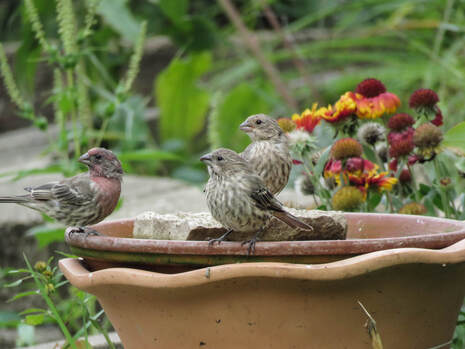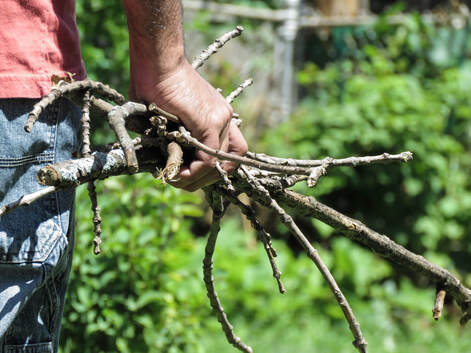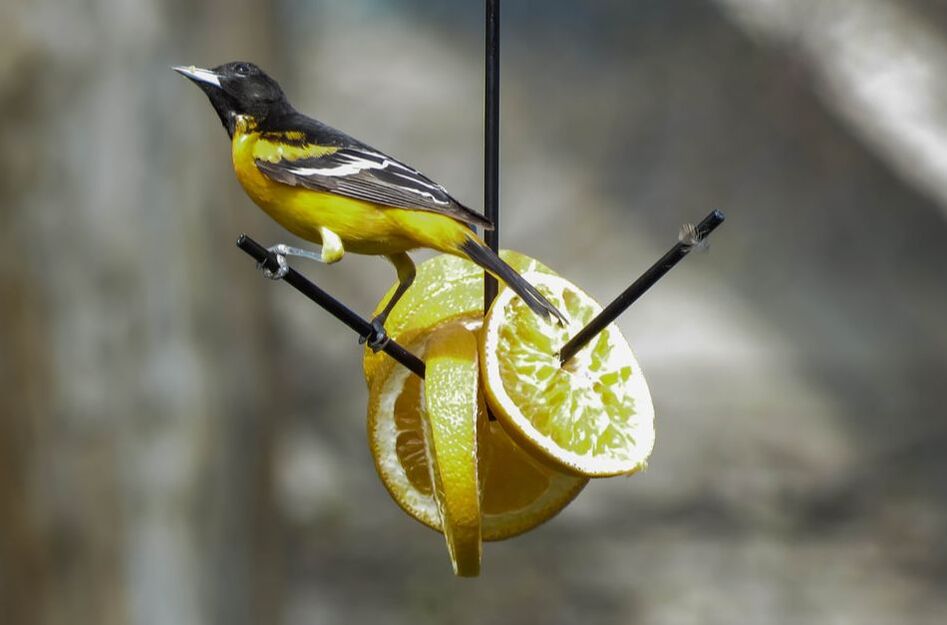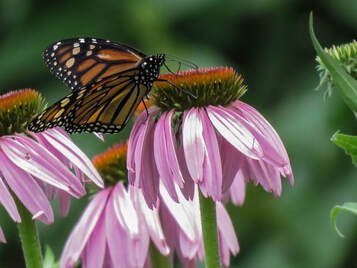BIRDING LOCAL - Bird Watching In Your Local Parks & Your Own Backyard
|
Whether you're an experienced bird watcher, or new to this amazing experience, no doubt you are on the lookout for great spaces to go birding.
The wonderful thing about admiring birds is that it can be done in a wide variety of habitats. Whether you live in urban or rural spaces, the opportunity to enjoy the sights and sounds of birds is all around us. Once considered a hobby for the older set, or the nature nerds among us, birding is becoming a very popular pastime. And one that all walks of life can enjoy. I find it thoroughly exciting to see birders of every age, sex, race, and ability enjoying this natural adventure. Face it, folks, bird watching is now hip. And that means good things for the birds of the world. The more people that engage in the enjoyment and conservation of birds and their habitat, the better. It's one of those activities that offers instant gratification, too. Equipment required is minimal: a pair of binoculars comes in handy, or a camera with a zoom lens. A pocket bird identification guidebook, or a bird identification smartphone app, and a notebook, if you're keeping track of the species you see. |
Where To Find The Birds In Wisconsin
|
Of course, Wisconsin State Parks, trails and nature preserves are a great place to go bird watching, but don't count out your local neighborhood parks or your own backyard.
During migration, birds fly thousands of miles from places like South America, to the United States and Canada, where they will breed, nest, and raise their young over the spring and summer. En route to these destinations, you can find them feeding and resting in green spaces all across the state of Wisconsin. If there's a park or yard with trees, bushes, a birdbath, and a river, creek, pond or wetland of some sort, they will find it. |
When To Go Bird Watching
|
Spring is a great time to bird watch in Wisconsin. There are many bird species (about 250) that make Wisconsin their year-round home, but during spring and fall migration, upwards of 400 birds have been recorded throughout the state.
Many of these birds pass right over our homes while we sleep at night, en route to their summer nesting destinations. In fact, if you sit outside, late, on a quiet evening, you can actually hear the call of migrating birds overhead. Even in the city. Usually they'll be too high up to see them with the naked eye, but you can hear them. There are even bird migration forecast maps that can tell you when birds are migrating, where they will be heading, and what types of birds are migrating. Of course, summer is nesting season, so be on the lookout for fledgling birds being fed by their parents. And fall migration is a hot bird watching time of year, too, as birds that winter in the southern United States, and even further south, head back in that direction. Winter also has its highlights, with plenty of local resident birds out and about. For migration forecasts, check out: birdcast.info |
Invite The Birds To Your Backyard
|
Chances are, no matter where you live, you see birds. But if you want to attract more of them to your yard, you can do some simple things to make your yard more hospitable. Got trees or shrubs already? Great!
Add a simple bird bath. Resident birds will enjoy the water source, as will the migrating birds passing through. You will be amazed at the different birds that will visit a birdbath. You can create a simple bird bath using a medium sized flower pot, putting the bottom flower pot tray in the top of the pot. Fill it with water, and maybe a big rock for birds to land on, and you have a welcoming spot for thirsty birds. A simple bird bath like this can fit nicely on a small patio or balcony, too. |
Provide Some Shelter
|
Birds need shelter. Trees and bushes are great. But another simple way to provide shelter for birds is to make a brush pile using fallen branches and sticks. The birds will appreciate being able to find shelter under the sticks, sitting on top of the brush in the sun, and scrounging for bugs to eat beneath the brush as well.
You can place your brush pile off to a corner of the yard, or next to a fence or garden border. We have ours next to a leaf compost bin, in a spot where we can easily see it from the window so we can watch the birds come and go. Brush piles will provide shelter for birds in all seasons. They are great places to hide out from predators, a winter storm, or a heavy rain. Keep an eye on your brush pile. You'll be amazed at the wildlife visiting there. |
Provide Good Things To Eat
|
Feed the birds with native plants, shrubs and trees. We have a variety of native plants in our garden. One of the most popular, and easily maintained native plants is Coneflower. This plant returns year after year, and its pollen feeds butterflies and bees, and its seeds, later in the season, will feed a variety of birds. Leave them in the garden over the winter as well, and birds will find them a great source of food during a time of year when natural food is more scarce.
If you don't have a yard, but have space for a planter or two, plant natives and pollinator friendly plants in those. Every little bit can make a difference. Sunflowers make a great potted plant, and offer food for the birds in the fall as growing season fades. For native plants ideas, visit the National Wildlife Federation website Native Plantfinder. |
Should You Put Out A Bird Feeder?
|
|
Bird feeders can be a great way to supplement the natural foods in your garden, or provide food in a space that isn't conducive to gardening. The most prevalent bird seed is black oil sunflower seeds. They are enjoyed by a wide variety of birds. And squirrels, and other critters, too, so be aware.
We don't mind feeding the squirrels and chipmunks in our habitat, but we offer safflower seed feeders as well, since the squirrels don't seem to care for safflower. During spring migration we often put out fresh orange slices, as they are a favorite of Baltimore Orioles. Other birds, such as Gray Catbirds, and House Finches enjoy them as well. As our garden fills in with more native plants, berries, and other natural food sources for the birds that visit, we will probably decrease the amount of feeders we offer, except during stressful times of year when natural foods are scarce (winter, anyone?). As mentioned above, leaving the spent plants and seed heads over the winter does provide a supply of natural foods for feathered diners. Keep in mind that feeders require regular cleaning and maintenance, and, in the event of an avian virus outbreak, they should be cleaned more often, or even taken down for a time. For more tips on offering backyard birdfeeders, check out additional bird feeding tips here. |
Avoid Pesticides and Rodenticides
|
Pesticides don't just kill weeds or unwanted bugs. They eventually kill all living creatures. The bugs found in our gardens and yards are natural food sources for birds and other wildlife.
Poisoning mice, rats, and other small critters, can also lead to the death of larger birds of prey (hawks, for example), and even your neighborhood pets, which could come upon dead critters and ingest the poisons. Bees, butterflies, and other pollinators are also harmed by pesticides (even if it's just on your lawn), and that is detrimental to flowers, shrubs, and any produce grown in the garden. Not for nothing, they are bad for us, too. |
Bird Watching Is Good For Your Health
|
Not only can bird watching benefit your physical health by getting you outdoors for some fresh air, sunshine, and physical activity, but it can offer positive benefits to your mental health and stress levels, too. The act of supporting bird conservation is good for the planet, too. It's a win-win.
There are multitudes of studies on this very subject, and the proof is out there. I, personally, have found bird watching to be, not only a stress reliever for me, but a benefit to my physical and creative energies as well. When life is overwhelming, spending a few minutes watching the birds in my backyard, or along the walking trail at a local park can take me out of myself long enough to improve my outlook. |
Bird watching is such a rewarding activity. It helps me to appreciate, and care about, the wildlife that surrounds me. Birds are fascinating, beautiful creatures. I love that I can watch them, and hear their song, whether in my city backyard, neighborhood park, or in wider, wilder environments. I'm humbled, and calmed, by their presence. Maybe you will be, too.
For more information on backyard birding, visit the Wisconsin DNR website.
For information on preserving birds and other wildlife, visit the National Wildlife Federation website.
For more information on backyard birding, visit the Wisconsin DNR website.
For information on preserving birds and other wildlife, visit the National Wildlife Federation website.












